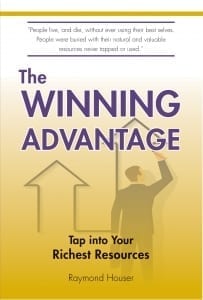The Secret to Success: It’s Not a Secret

Many people wonder about the secret to success. Successful people are viewed as special, possessing unique talents, vision, and unflagging commitment.
The reality is there is no secret. Success is not limited to a few individuals, but is within the grasp of everyone. All it takes is an honest assessment of your abilities and creating your own definition of success. This doesn’t have to include owning a private jet or a villa in France. You just need to figure out the things in life that will make you happy, and create a roadmap for achieving them.
During my career as a successful commodities broker, I learned a key lesson about success: self-management is more important than talent. The most successful people aren’t necessarily the ones with the most talent, but the ones who believe in themselves and are determined to persevere in the face of adversity.
High achievers are often regarded with awe and respect. They are seen as extraordinary beings because they accomplish so much. Yet there are consistencies in their behaviors that anyone can follow. High achievers:
- Identify goals
- Study how to make them happen
- Plans steps to achieve them
- Execute
Whether they are called ambitions, purposes or aims, goals can help you live a meaningful, productive life. There’s a difference between goals and dreams. You can dream about winning the lottery, but if you make that your life’s ambition you’re going to end up sorely disappointed, unless you’re incredibly lucky.
Goals are dreams that can be realistically attained. Don’t get me wrong. I have nothing against material rewards. But a desire to be wealthy without a clear path to attaining it is a recipe for frustration.
Businessman and author Philip L. Stephen aptly describes the basic goals of life:
- Family: what you will do for them
- Professional: what you aim to achieve
- Financial: planning for the present and the future
- Social: the groups you belong to
- Health: taking care of yourself
- Intellectual: continuing to learn
- Recreational: taking the time to relax
A powerful tool in goal setting is visualization. If you can see where you are going, it’s easier to anticipate the complications that will inevitably arise. That gives you an advantage because you’re not just concentrating on achieving an outcome, you’re also figuring out ahead of time how to avoid or face difficulties that will arise.
A frequent stumbling block in developing and sticking to a plan is negative self-image resulting from childhood experiences. You can rid yourself of negative thoughts by telling yourself that you are a unique individual with unique abilities. You can be what you want to be – if you accept that you can. As Henry Ford said, “Whether you think you can or you think you can’t, you’re right.”
Be bold! Don’t be afraid to reset your goals as the need arises. New objectives will form, and they may very well be the means to all kinds of rewards.
To summarize:
- Define your goals
- Accentuate the positive, minimize the negative
- Adopt good habits that center on self-motivation
- Visualize what you want to accomplish
- Select goals based on your own needs, not on others’ needs
In closing, remember that the only chains and shackles that hold any of us back from any goal in life are those that we ourselves forge in the fires of doubt and hammer out on the anvils of lack of belief.
About the Author




 Being a futurist means paying attention to new patterns or trends that are slowly percolating up through the market and/or society that have the potential to catch on in a major way. It’s about coming up with possible scenarios for the future given these developments.
Being a futurist means paying attention to new patterns or trends that are slowly percolating up through the market and/or society that have the potential to catch on in a major way. It’s about coming up with possible scenarios for the future given these developments. Alexandra Levit is the author of the new book
Alexandra Levit is the author of the new book 
